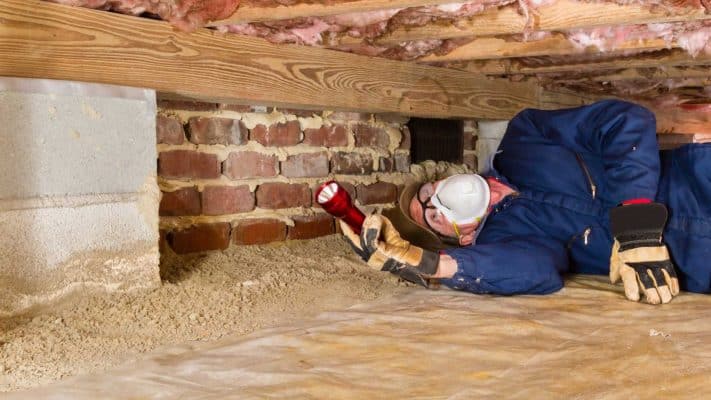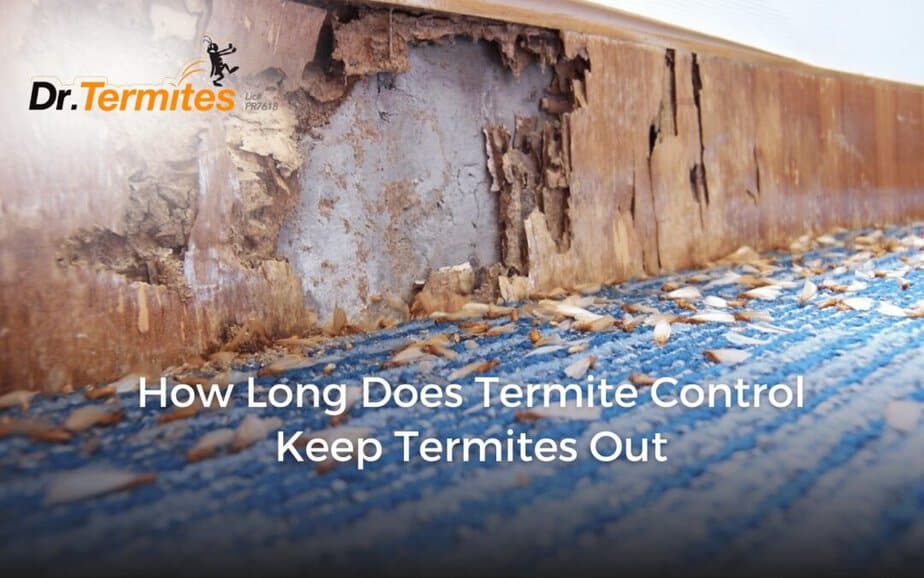Termite management is essential to preserving your home’s structural integrity and safety. These little insects have the potential to wreak a great deal of harm, but they are frequently overlooked until serious harm has been done. Termites have the ability to discreetly infiltrate buildings, feed on wood, and jeopardize their structural stability. In addition to eliminating existing infestations, efficient termite control also helps avoid recurrence. How long these treatments can keep termites away is a question that many homeowners have. To guarantee a termite-free environment, it is crucial to comprehend the efficacy and duration of termite treatment.

Essential Guide to Termite Management
What is Termite Control?
Termite control is the process of removing termites from a property and keeping them from coming back using a variety of methods and treatments. This procedure usually starts with a thorough examination conducted by a professional termite control specialist. After determining the existence and severity of any termite infestation, these experts suggest a personalized treatment strategy. Several techniques intended to successfully eliminate termites and shield the building from future invasions may be included in this approach.
Why is Termite Control Important?
Termites are dangerous because, typically going undetected until it is too late, they can seriously destroy a building’s structure. They use wood, which can erode the overall stability and foundation of residential and commercial structures. The expenses incurred in fixing damage might mount up over time. Maintaining the safety and value of your property while avoiding these expensive repairs depends on effective termite management. You may safeguard your house and save yourself the trouble and cost of repairs by making an investment in preventive measures.
How Long Does Termite Control Last?
Factors Affecting Duration
The duration of termite control effectiveness can vary due to several factors. The species of termites present, environmental conditions, and the specific treatment method used all play a part in how long protection lasts. Proper application and regular maintenance are critical for extending the lifespan of these treatments. Additionally, the severity of the infestation at the time of treatment can influence how long the control measures remain effective. A well-executed treatment plan can provide protection for several years, although external factors can alter this timeline.
Types of Termite Treatments
There are several types of termite treatments, each with varying durations of effectiveness. Liquid soil treatments, which create a chemical barrier, can last for several years, often up to five, depending on the product and soil conditions. Bait stations, another common method, require regular monitoring and maintenance but can deliver continuous protection if managed properly. Advances in technology have also improved the efficiency and longevity of these treatments, ensuring better protection against termites.
Signs You Need a New Treatment
Visible Termite Activity
One of the most apparent signs that you may need a new termite treatment is visible termite activity. This can include seeing live termites, mud tubes along walls or foundations, or discarded wings near windows and doors. These indicators suggest that termites have breached previous control measures and are actively infesting your property once again.
Structural Changes in Your Home
Noticeable changes in your home’s structure can also signal a termite problem. This might include sagging floors, hollow-sounding wood, or small holes in drywall or wooden surfaces. Such changes often indicate that termites are consuming the wooden structures within your home, necessitating immediate action to prevent further damage.
Maintaining Termite Control
Regular Inspections
Regular inspections by a professional termite control service are vital for maintaining effective protection. These inspections can help detect any new termite activity early and ensure existing treatments remain effective. Scheduling annual inspections, or as recommended by your pest control provider, can help identify potential problems before they become severe.
Preventive Measures
Aside from professional inspections, homeowners can implement preventive measures to reduce the risk of termite infestations. This includes minimizing wood-to-soil contact around the home, ensuring proper drainage to keep the foundation dry, and removing wood debris or stacks from near the house. These steps can enhance the effectiveness of professional termite control treatments, extending the protection for your home.
Essential Strategies for Long-Term Termite Protection in Your Home
Maintaining effective termite control is essential for protecting your home from these destructive pests. The duration of termite control can vary due to a range of factors, but with proper maintenance and regular inspections, homeowners can ensure enduring protection. By recognizing the signs of an infestation early and implementing preventive measures, you can safeguard your home from termite damage. Investing in professional termite control is a critical step in maintaining the structural integrity and value of your property. By staying vigilant and proactive, you can keep termites at bay and ensure your home remains secure for years to come.
Ready to shield your home against termites? Dr. Termites is here to help! Our expert team provides top-notch termite control solutions designed to keep your property safe and secure. Don’t wait for the damage to happen. Contact Dr. Termites today and ensure your home’s protection for years to come!































